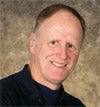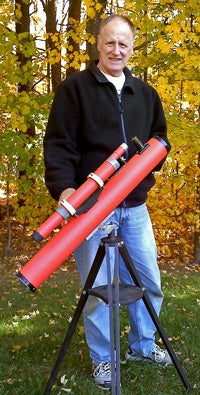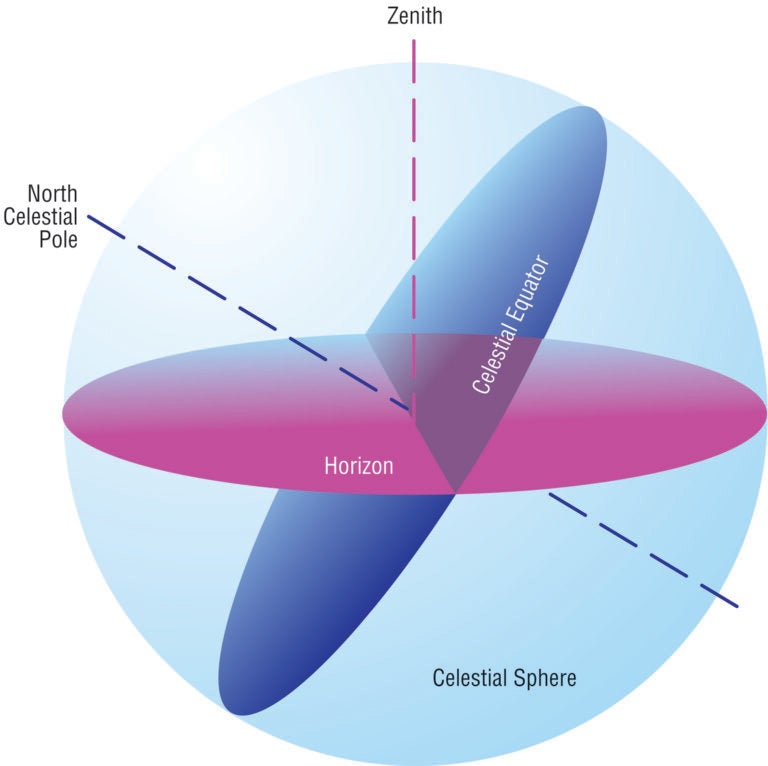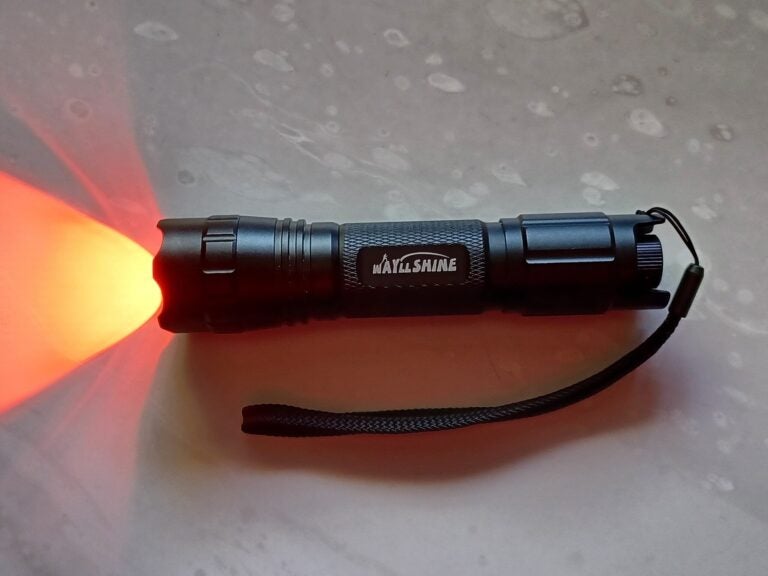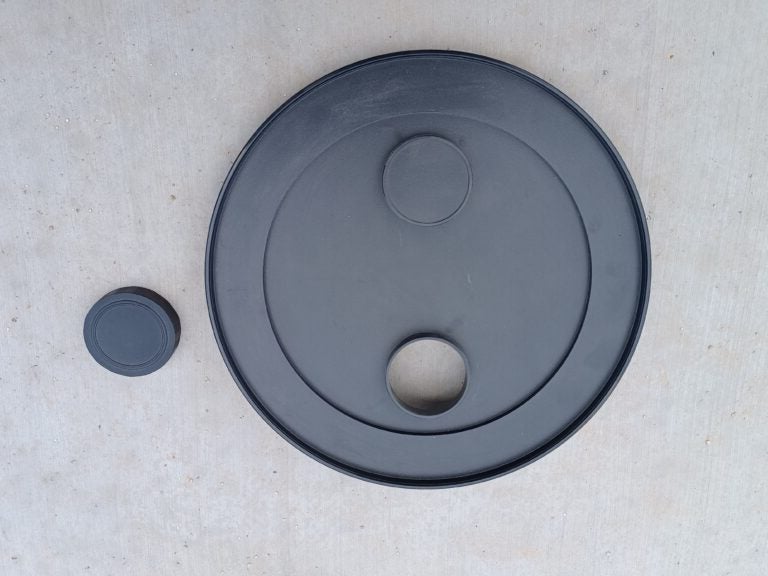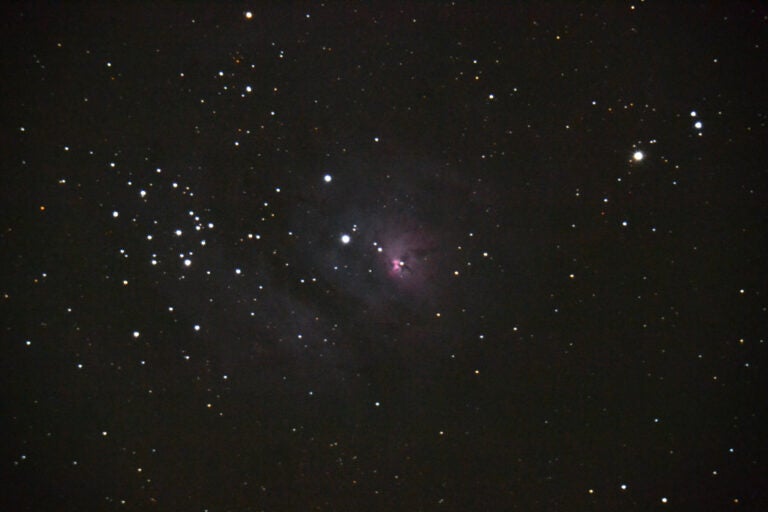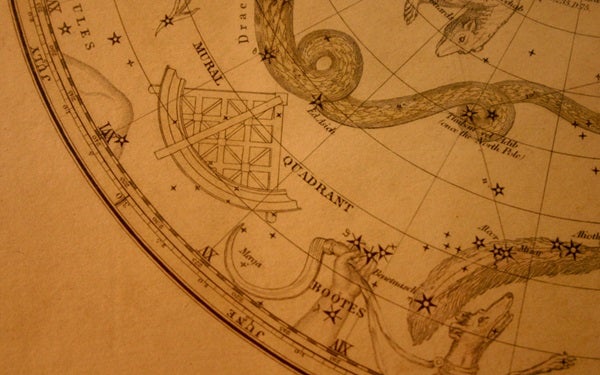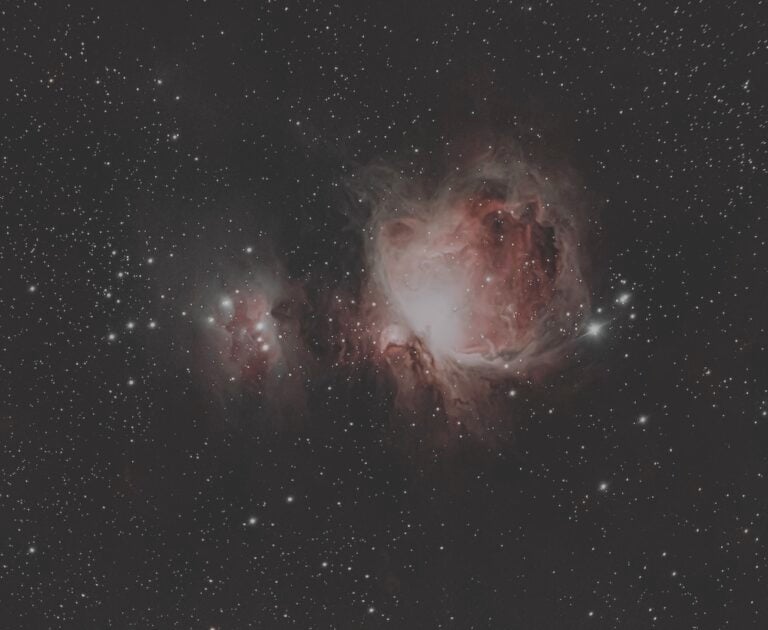Soon, I was off to college. At a social event for freshmen, I described my telescope to an astronomy major. “That telescope isn’t any good,” she sniffed. “It only has ¼-wave optics.” I had no idea what ¼-wave optics meant, but it was obvious she wasn’t impressed.
After graduation, I began using my telescope in earnest. Almost immediately, I made an astonishing discovery. I observed Saturn (its rings were amazing!) and made a sketch to include three nearby field stars. Within a few nights, it was apparent that one of the stars was traveling with Saturn. In the same manner that Galileo discovered the four bright moons of Jupiter, I “discovered” Saturn’s primary moon, Titan. So what if Dutch astronomer Christiaan Huygens beat me by 315 years? My independent discovery was sweet indeed!
And so that 3-inch scope and I began a voyage into the night sky. Our first destinations were bright ports of call — the Moon, Venus, Jupiter, dazzling double stars like Mizar and Albireo, and showpiece deep-space objects such as the Orion Nebula (M42) and the Andromeda Galaxy (M31).
In the summer of 1973, I made my first trek to the Stellafane Convention in Vermont. Driving up to the camping area, I became intimidated by the overwhelming presence of large-aperture telescopes — 6- to 12-inch beasts that could have easily devoured my little scope. For fear of being mocked, I hid the 3-inch in the trunk until well after dark.
Soon we began sailing into uncharted waters. My small scope and I marveled at a once-in-a-lifetime cosmic event — the occultation of the bright star Epsilon (ε) Geminorum by the planet Mars. We even contributed to science. Early one evening, the 3-inch revealed that the star SS Cygni had brightened. I notified the American Association of Variable Star Observers, which, in turn, alerted astronomers at an observatory in Arizona. They were able to catch the initial stages of an outburst of this cataclysmic star.
In 1978, I returned to Stellafane. This time I proudly removed my 3-inch scope from the trunk and plunked it down in front of an audience of 200 at an informal talk session. It had changed in appearance. The white cardboard tube was covered with red contact paper, and a homemade wooden eyepiece holder braced the legs. I had even added a larger finder scope. For 15 minutes, I recounted the adventures this little telescope and I had shared, much to the amazement of the owners of those 6- to 12-inch scopes.
Since then, I’ve purchased bigger and better telescopes, and the 3-inch reflector has spent more and more time in the closet. Not long ago, I was hit with a wave of nostalgia and decided to take the 3-inch out of mothballs. After a few minor modifications to make the mount even sturdier, we again set sail on the cosmic sea. Like friends who haven’t seen each other in years, we picked up exactly where we had left off. Struve 2581 in Aquila was our 1,520th double star. The asteroids (36) Atalante and (219) Thusnelda became the 116th and 117th entries on our all-time asteroid list. How’s that for a ¼-wave telescope, Ms. Astronomy Major?
Am I bragging? You bet! Not about me, however. I’m singing the praise of “the little telescope that could.” There’s a moral to this story: Bigger isn’t always better, and a small telescope has a large eye, indeed.
Questions, comments, or suggestions? E-mail me at gchaple@hotmail.com. Next month: the backyard Astronomy Blahs. Clear skies!

